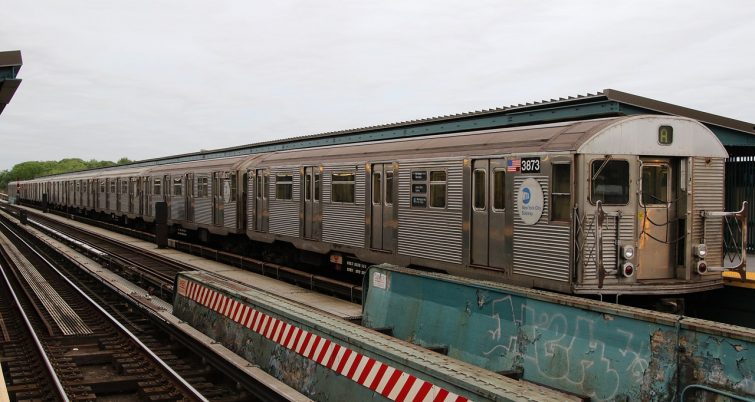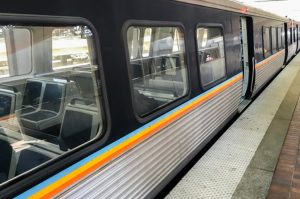New York State Comptroller says MTA debt levels threaten capital program
Written by David C. Lester, Editor-in-Chief
MTA debt levels and reduced revenue spell trouble for MTA's capital program.
New York State Comptroller Thomas DiNapoli’s annual report on the Metropolitan Transportation Authority’s debt levels found the MTA does not have the resources to fully fund its $54.8 billion 2020-2024 capital program, which is vital to improving riders’ experience and bringing them back to the transit system. The report finds that delays to capital projects, severe revenue declines, and increased borrowing, caused by the COVID-19 pandemic, are making the Authority’s capital program to repair, modernize and expand the transit system appear increasingly unrealistic.
“The MTA and its riders face difficult years ahead, despite recent federal relief that helped avoid drastic short-term budget cuts,” DiNapoli said. “The MTA’s mounting debts and devastated revenue make it unlikely that it can afford all the work it planned. The numbers just don’t add up. Either ridership and revenue must recover faster than the MTA expects, or the MTA must find new sources of income, or other financial support, to pay for additional debt service. The President’s proposed infrastructure program may provide capital funding to help the MTA reduce its borrowing, but this is still uncertain. If not, the MTA, and its customers, likely face serious cuts to upgrades and other work that could impact the quality of service.”
The COVID-19 pandemic devastated ridership and hurt other sources of MTA revenue, which the MTA forecasts will not return to normal levels until after 2024. The slow return of subway ridership is predominantly in the outer boroughs, while major transit hubs continue to lag, as DiNapoli’s subway ridership dashboard tracks each month. To cover farebox and other revenue losses, the MTA borrowed $2.9 billion to pay operating expenses. It now can no longer afford to pay for the debt service on $9.8 billion in debt it had planned to issue for the transit and commuter rail portions of its capital program. Unless the MTA can find new sources of income or cut expenses, it will have to cut the program by $2.9 billion or more or further delay projects.
Just how the MTA will move forward with the most ambitious capital program in its history, which it has barely been able to start, while facing uncertain funding and rising debt burden, is a dilemma that it will have to work out with its city, state and federal funding partners, who face their own fiscal constraints. The MTA’s chronic inability to complete capital programs predates the pandemic. At the end of 2019, more than two-thirds of the projects in its 2015-2019 capital program were not complete. By the end of 2020, with much work paused, about half of the 1,165 projects remained unfinished.
The MTA’s outstanding long-term debt has tripled in the last two decades and the percentage of revenue it must put toward those debts has also grown dramatically. During the past decade, the MTA generally spent about 16 percent of its operating revenue on debt payments, but by 2024 debt service will devour 23 percent of revenues. Debt service is projected to reach $3.8 billion by 2028, which is $1.1 billion or 42 percent more than in 2020.
In March 2021, ridership was down from March 2019 by 65% on subways, 51% on buses, and more than 70% on commuter railroads. If ridership does not return as expected by 2024, the MTA will face the same rising debts but will have less income, opening the door to potential service cuts and higher than planned fare and toll hikes.
DiNapoli’s report also found:
- The MTA was devastated by the loss of farebox and dedicated tax revenues and has only balanced short-term budgets with $14.5 billion in federal aid and $2.9 billion in borrowing for operating purposes.
- The MTA’s outstanding long-term debt reached $38 billion in 2020 and will approach $47 billion by 2023. This may be higher if the MTA includes the issuance of $6.9 billion in anticipated debt for its 2020-2024 program.
- The MTA has a history of not meeting its capital commitment goals. For example, its stated goal was to put an annual average of $7.1 billion toward capital projects from 2016 through 2019, but it only committed $5.8 billion annually.
- The $54.8 billion 2020-2024 capital program is the MTA’s largest ever, and with that program just beginning it had a goal of committing $13.5 billion on projects in 2020 across all programs. With the pandemic pausing projects that were not federally funded or using in-house labor, only $5.4 billion was committed that year. For the 2020-2024 program, only 100 of 517 projects were completed or even started. The MTA’s total capital commitment goal for 2021 is $6.2 billion.
- State legislation commits New York state and New York City to provide $3 billion to the 2020-2024 program. The state has appropriated its full commitment and expects to issue $10 billion of its own bonds to fund this and prior commitments. However, there is a risk that the state might decide not to bond the full amount, as its own capacity under the state’s debt-reform limit becomes strained. NYC only appropriated $200 million so far and faces its own fiscal challenges.
- The MTA expects to get $10.7 billion in federal support for the 2020-2024 capital program, including $2.9 billion for the Second Avenue Subway, but this is not certain.
- Congestion pricing is projected to bring $15 billion to the 2020-2024 capital program. Final approval is expected later this year, but revenue won’t begin to appear until 2023.





